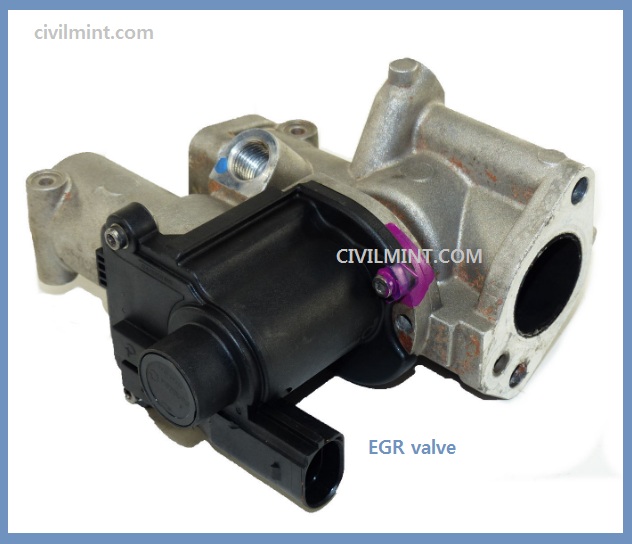The full form of the EGR Valve is Exhaust Gas Recirculation Valve. The EGR valve is part of the engine that controls the emission of exhaust fumes into the atmosphere. This causes a controlled amount of exhaust gas to flow into the intake manifold. Therefore, the exhaust gas recirculation valve opens and closes as needed.
In modern internal combustion engines, the EGR system controls the emission of exhaust fumes during the combustion process of fuel.

During fuel combustion, the engine draws air from the atmosphere and mixes it with the fuel. When the air-fuel mixture in the combustion chamber begins to burn, the temperature of the air-fuel mixture rises and nitrogen oxides (NOx) are released. If the
the car does not have an EGR valve, the generated NOx can be released into the atmosphere and cause serious health problems such as cancer and occupant death.
The principle of operation of the EGR system is to return a small portion of the exhaust gas from the intake manifold to the combustion chamber of the engine. This combustor lowers the combustion temperature and reduces NOx emissions.
This valve is a very important part of the engine and is normally shut off. Driven by a built-in stepper or vacuum motor. Connect the intake manifold and the exhaust manifold. In this way, the EGR valve controls the flow of recirculated exhaust gas according to the demand of the engine.
Table of Contents
Function of EGR Valve in IC Engine
EGR is an abbreviation for exhaust gas recirculation. The main function of the EGR valve is to control exhaust emissions in both gasoline and diesel engines. This plays a major role in maintaining the health of the vehicle’s engine and exhaust system. The EGR valve accurately recirculates heavy exhaust gas into the engine’s intake system to improve engine efficiency, reduce NOx emissions and improve fuel economy.
How Does it Work?
The atmosphere contains almost 80% nitrogen. When this nitrogen is heated to a very high temperature in the combustion chamber of an engine, it reacts with a normal inert gas to produce dangerous NOx. This generated NOx is sent to the EGR (Exhaust Gas Recirculation) system, where it is discharged into the atmosphere.
The exhaust gas recirculation system returns an additional portion of NOx to the combustion chamber, where it combines with fresh air to cool the combustion chamber.
This system reduces the amount of O2 and increases the water vapor content of the combustion mixture. This lowers the maximum temperature of the combustion process. This is because the NOx generation process increases as the maximum combustion temperature rises.
The EGR system has a valve. This valve controls the NOx discharge rate. It is installed between the exhaust manifold and the intake manifold. Simply put, this valve creates a connection between the intake manifold and the exhaust manifold. The
EGR valve starts operating as soon as the engine starts, reaching the proper operating temperature and increasing the vehicle speed. Reduces NOx emissions.
As soon as the vehicle speed drops and the engine stops, the valve returns to the closed position and stops the flow of exhaust gas.
Various Types of EGR Valves
- Diesel high-pressure EGR valve
- Digital EGR valves
- Diesel Low-pressure EGR valves
- Vacuum operated EGR valves
- Gasoline EGR valves
Bad EGR Valve Symptoms
- Check the engine light
- Rough idling
- Smog test failed
- Fuel odor
- Increased fuel consumption
- Reduced engine output
- Knocking, knocking, or ringing noise
EGR Valve Replacement
The average replacement cost of an EGR valve depends on the location and brand. The average EGR bulb replacement cost is between $ 230 and $ 380. Replacement costs for valve parts range from $ 170 to $ 280. If you hire a workforce without replacing it yourself, labor costs range from $ 65 to $ 105.
